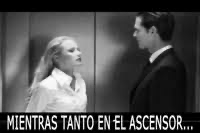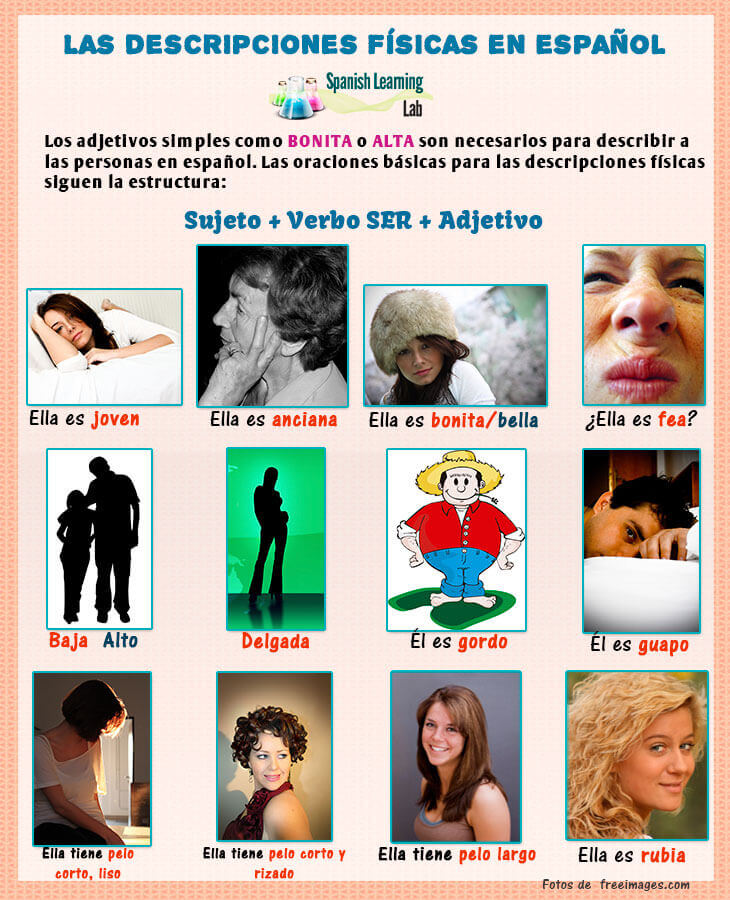Semana 2
¡Hola! Did you have a good weekend? This week we will learn greetings, how to describe people, and how to express negation in Spanish.
Let’s begin!
Los saludos
| Español | Inglés | Respuesta/ Response | Respuesta/ Response |
|---|---|---|---|
| Opening conversations | |||
| Hola | Hi/ Hello | Hola | ¿Qué tal?/ ¿Cómo estás?/ ¿Cómo está? |
| Buenos días | Good morning | Buenos días | ¿Qué tal?/ ¿Cómo estás?/ ¿Cómo está? |
| Buenas tardes | Good afternoon | Buenas tardes | ¿Qué tal?/ ¿Cómo estás?/ ¿Cómo está? |
| Buenas noches | Good evening | Buenas noches | ¿Qué tal?/ ¿Cómo estás?/ ¿Cómo está? |
| ¿Qué tal? | What’s up? | Bien, ¿y tú? (Informal) Bien, ¿y usted? (Formal) good, and you? |
Bien, gracias/ Bien, muchas gracias Good, thank you/ good, thank you very much. |
| ¿Cómo estás? | How are you? (Informal) | Bien, ¿y tú? (Informal) | Bien, gracias/ Bien, muchas gracias Good, thank you/ good, thank you very much. |
| ¿Cómo está? | How are you? (Formal) | Bien, ¿y usted? (Formal) | Bien, gracias/ Bien, muchas gracias Good, thank you/ good, thank you very much. |
| Cierre/ Closing conversation | |||
| Nos vemos | See ya! | Nos vemos | |
| Hasta pronto | See you soon | Hasta pronto | |
| Hasta luego | See you later | Hasta luego | |
| Adiós | Goodbye/ Bye | Adiós | |
| Hasta mañana | Goodnight | Hasta mañana | |
Una conversación simple
One of the simplest conversations (and sometimes an uncomfortable one) is the one you might hold when you meet a neighbor in an elevator or while waiting in a line.
For example:

Laura: ¡Hola, Pedro! ¿Cómo estás?
Pedro: ¡Hola, Laura! Bien, gracias. ¿Y tú?
Laura: Bien, gracias. ¿Qué tal el día?
Pedro: Bien. Estoy deseando llegar a casa. ¿Y tú?
Laura: Yo también. Bueno, es mi piso. ¡Hasta luego, Pedro!
Pedro: ¡Hasta luego, Laura!
During this semester, we will do a lot of conversations in class, remember to always start and close the conversation in a polite way.
¿Cómo te llamas? - What’s your name?
These greetings and conversation starters can also be used with people we don’t know. If we don’t know their names, we should ask them. We might have to spell our names, so it is useful to learn the ABCs in Spanish.
| A | A |
|---|---|
| B | Be |
| C | Ce |
| D | De |
| E | E |
| F | Efe |
| G | Ge |
| H | Hache |
| I | I (i latina) |
| J | Jota |
| K | Ka |
| L | Ele |
| M | Eme |
| N | Ene |
| Ñ | Eñe |
| O | O |
| P | Pe |
| Q | Qu |
| R | Erre |
| S | Ese |
| T | Te |
| U | U |
| V | Uve |
| W | Uve doble |
| X | Equis |
| Y | I griega |
| Z | Zeta |
Por ejemplo:
- ¿Cómo te llamas? (Informal)/ ¿Cómo se llama? (Formal)
- Me llamo Lucia.
- ¿Cómo se escribe tu/ su nombre?
- Se escribe así ele, u, ce, i, a.
Let’s practice
Find 3 classmates you haven’t talked to yet, and have a little conversation.
Remember to use everything we’ve seen so far: starters, asking and spelling names, and closing conversations politely.
Concordancia nombre-adjetivo
We have already stablished that nouns in Spanish have a specific gramatical gender, either masculine or feminine. One of the biggest differences between Spanish and English is that adjectives have too a specific gender, and it has to match the gender of the noun that it is describing. The other big difference is the placement: adjectives are usually placed after the noun they are describing or after the verb ser.
Blue dress - Vestido azul.
Wait a minute, do you remember what an adjetive is? It is a word that describes an attribute, added to or grammatically related to a noun to modify or describe it.
Don't forget about the number too! Nouns and adjectives have to agree in gender AND number!
If the noun you are using is masculine-singular, the adjective must be masculine-singular as well. It’s important to note that while the gender of nouns is an inherent property, adjectives do not have this inherent characteristic. The gender of an adjective will change according to the noun.
| El chico | listo | Los chicos | listos |
| La chica | lista | Las chicas | listas |
If a masculine singular adjective ends in a consonant or a vowel other than -o (most commonly -e), it does not change for gender but it will change for number:
| el libro interesante | los libros interesantes |
| la noticia interesante | las noticias interesantes |
ChatGPT created activity:
Descripción personal
In order to describe people, we will need to use these verbs:
Ser – to be (yo soy, tú eres, él/ella/usted es, nosotro@s somos, vosotr@s sois, ell@s, ustedes son).
- El chico es alto. El pelo es ondulado. El pelo es canoso. Los niños son rubios. La señora es canosa.
Llevar – to wear (yo llevo, tú llevas, él/ella/usted lleva, nosotr@s llevamos, vosotr@s lleváis, ell@s/ ustedes llevan).
- El chico lleva un traje negro. Lleva bigote y barba.
Tener – to have (yo tengo, tú tienes, él/ella/usted tiene, nosotr@s tenemos, vosotr@s tenéis, ell@s/ ustedes tienen).
- El chico tiene el pelo ondulado. El hombre tiene el pelo canoso. Tiene bigote y barba.
Physical Description

adjetivos-apariencia-espanol-spanish-physical-appearance-adjectives-pdf-worksheet
For more activities, visit this link: https://www.spanishlearninglab.com/describir-personas-en-espanol/
Description of personality
| Físico | Ropa | Personalidad |
| Es alto y tiene el pelo moreno. | Lleva vaqueros y un jersey azul | Es cómico y trabajador. |
Lee tu descripción, vamos a adivinar quién es.
Now, let's practice some more:
- Pair Activity:
- Have students pair up and sit facing each other. Each student should have a blank sheet of paper and a pen.
- Description Time:
- Student A will describe the imaginary person on their character card to Student B, using the adjectives they've learned. For example, "Mi amigo es alto y simpático."
- Student B listens and tries to draw a rough sketch of the described person based on the given traits.
- Switch Roles:
- After a few minutes, switch roles. Now, Student B describes their imaginary person to Student A.
- Sharing Creations:
- Invite a few pairs to share their descriptions and drawings with the class. This encourages speaking and listening skills.
Negaciones
How do we express negative notions in Spanish?
- Yo NO llevo falda ⇒ ”No” precedes the verb.
- No tengo ninguna falda ⇒ Double negations are ok in Spanish!
- ¿Te gustan las faldas?
- No, no me gustan las faldas ⇒ We may repeat “no” when stating "No, X don’t/ doesn’t …”
- ¿Te gustan las faldas? - No, prefiero los vestidos ⇒ if we answer by giving extra information, there is no need to repeat the question.
Let's practice!
- Create 10 yes/no questions ¿? (about clothes/ personality/ physical traits)
- For example: ¿Llevas pantalones en una cita?
- Habla con 2 compañeros y responde a sus preguntas.
USEFUL WORDS: Llevar, ser, tener, TE GUSTA/ ME GUSTA (you like/ I like), Anyone/ someone – alguien, no one – nadie/ ninguna. (almost) Everyone – (casi) todos
...

